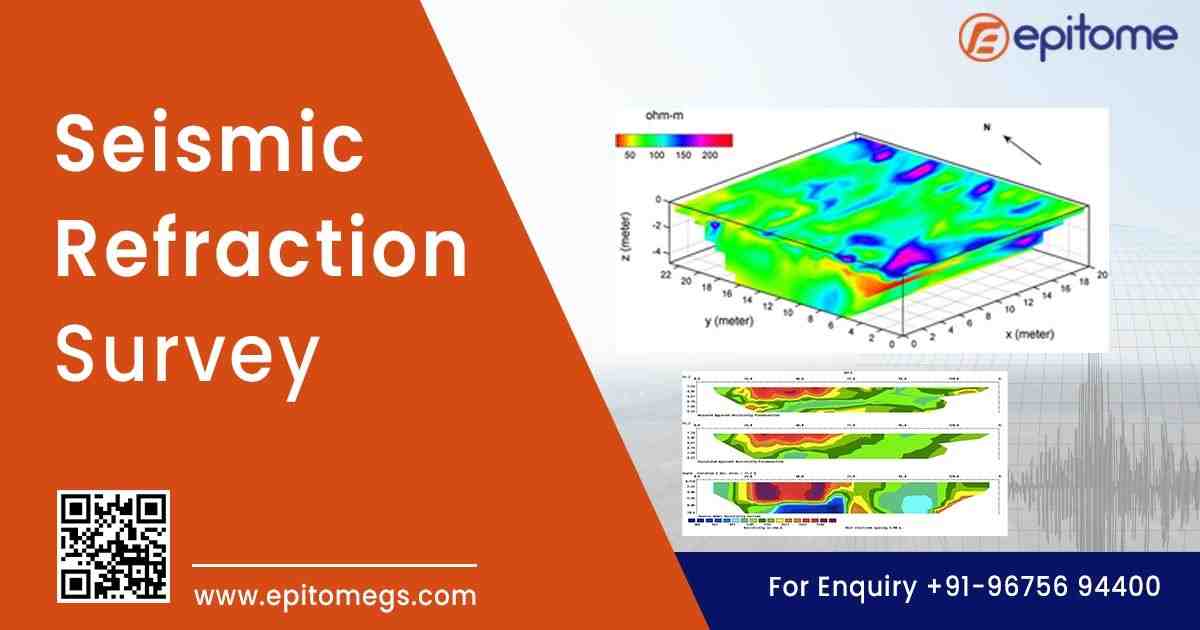


Epitome’s Seismic Refraction Subsurface Analysis is a cutting-edge geophysical method used to investigate subsurface conditions with high accuracy.
Seismic refraction is a powerful geophysical method used to investigate subsurface conditions accurately. At Epitome Geotechnical Service, we specialize in seismic refraction surveys to provide essential data for informed decision-making in engineering and construction projects.
Seismic refraction is a geophysical technique that measures the travel time of seismic waves through different subsurface layers. When an energy source, such as a hammer or controlled explosion, generates seismic waves, these waves travel through the ground at varying speeds depending on the material properties. By analyzing how these waves bend and refract at layer boundaries, geophysicists can determine the depth, density, and composition of subsurface materials.
At Epitome Geotechnical Service, we employ state-of-the-art seismic refraction techniques to offer detailed subsurface analysis. Our experienced team ensures reliable data interpretation, providing engineers and developers with the critical information needed for safe and efficient project execution.
Whether you’re planning a construction project, evaluating geological risks, or assessing groundwater resources, seismic refraction is an indispensable tool. Contact Epitome Geotechnical Service today to learn how our expertise can contribute to your project’s success.
High Accuracy: Provides precise depth measurements of bedrock, soil layers, and water tables.
Non-Destructive Method: Does not require excavation, minimizing environmental impact.
Cost-Effective: Reduces project risks by identifying subsurface hazards before construction begins.
Efficient and Fast: Delivers results quickly, allowing projects to proceed without unnecessary delays.
Seismic refraction provides critical information for a variety of engineering and geological applications, such as:
Foundation Analysis: Ensures a stable and secure base for buildings and structures.
Road and Highway Planning: Assesses soil and rock conditions to optimize pavement design and reduce maintenance costs.
Water Resource Management: Identifies groundwater levels and aquifer characteristics.
Landslide and Slope Stability Studies: Helps in assessing potential landslide risks and designing slope reinforcements.
Mining and Quarrying: Determines the depth and quality of mineral deposits before excavation.
Conclusion
Seismic refraction is a fundamental tool in geotechnical engineering, offering invaluable insights into subsurface conditions that directly impact construction, infrastructure, and environmental projects. Its accuracy, efficiency, and cost-effectiveness make it a preferred method for assessing ground stability and composition. By partnering with Epitome Geotechnical Service, you ensure access to advanced technology and expert analysis, setting the foundation for successful project execution.
Ideal for construction, mining, geological studies, and environmental assessments, Epitome’s seismic refraction services offer precise insights into subsurface formations. With advanced technology and expert interpretation, we ensure reliable and cost-effective solutions for engineering and geotechnical projects.
